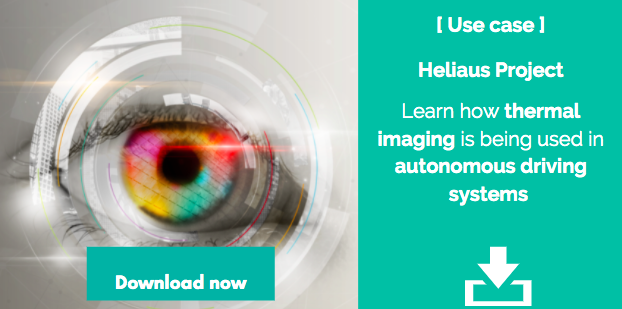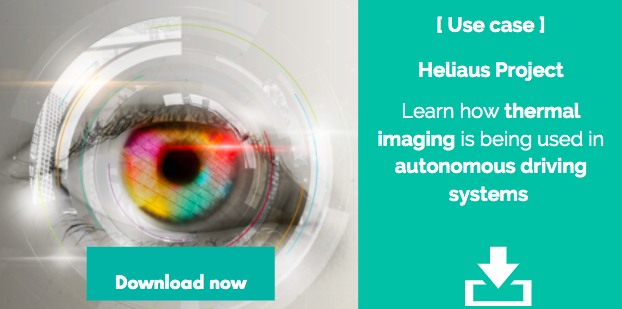Precision Thermal Imaging for Hunting & Leisure: Premium European Solutions for ...
The Hunting & Leisure market is evolving—driven by advanced technology, changing regulations, and the expectations of a new generation of responsible hunters...

October 09, 2020 . 4min read
Artificial intelligence (AI) has the capacity to improve the performance not only of humans, but of entire organizations. For example, AI algorithms power new applications and services that help humans do their jobs better in industrial settings. Thermal imaging is one such application. Used increasingly in industry, thermal, or infrared, imaging could be one of the primary beneficiaries of AI. During the Covid-19 pandemic, we saw how augmented thermal imaging (thermal imaging with AI) could help detect people with fevers, even in crowds.
One area where AI really stands out is for solving random problems, something conventional algorithms cannot do. Whether it is in surveillance, smart buildings, or autonomous vehicles, thermal imaging is increasingly faced with random events influenced by unpredictable human behavior. AI is ideal for these “nondeterministic” problems, for which the solution can be different each time the problem occurs.
Read on to learn how AI and infrared technology are being used together in industrial settings.
Temperature measurement
In the current public health crisis, having the technical means to detect potential cases of infection is vital. Infrared temperature measurement systems powered by AI algorithms have been developed, increasing the effectiveness of temperature controls. AI can detect and measure temperature on a person’s face and other areas that best indicate core body temperature—all without physical contact. These temperature controls are fast and non-intrusive, facilitating screening.
Presence detection for ADAS and autonomous driving
Whether it is for ADAS (Advanced Driver Assistance Systems) or fully autonomous driving, technologies capable of ensuring adequate control and safety are an absolute necessity. The automotive industry is turning to AI for use in a wide range of vehicle systems, some of which also include thermal imaging, useful in enhancing night vision, for example. Databases of pictures of roads in urban, rural, and other environments taken during the day and at night are used to improve autonomous perception in different traffic conditions. The flow of images from a vehicle’s two sensors is captured and used to feed the AI algorithms that power different vehicle systems. The images captured must be annotated so that algorithms can learn from them. Here, deep learning is used to automatically model the data gathered so that the AI can learn it, ultimately improving applications for infrared technology such as obstacle and pedestrian detection.

Waste sorting
Optical waste sorting machines use infrared technology to detect plastics and, especially, resins. When AI and, in particular, deep learning, is added, these machines can sort even better, eliminating items with slight impurities from the material recycled. These items, undetectable using thermal imaging alone, can be identified thanks to huge image databases.
Understanding scenes
Thermal imaging can be used to “see” a scene at night, even in bad weather. This ability is particularly useful in surveillance, security, and defense. When you add AI, thermal imaging sensors can not only detect human presence, they can actually interpret what they are seeing. A thermal sensor can identify a suspicious human presence in a border zone; a thermal sensor with AI can decide to raise the alert if the human detected appears to be trying to cut through or climb over a security fence, for instance. This kind of intelligence makes human responders’ work easier, safer, and more effective.
Understanding scenes in this way requires a combination of computer vision, thermal imaging, and AI. The AI serves as the system’s “brain.” It can learn, adapt, consider alternatives, and come up with new strategies for interpreting and analyzing a scene.
Counting endangered wildlife species
Thermal imaging can detect the presence of animals at night, even in harsh terrain. When you add AI to these infrared sensors and install them on drones, for example, you can fly over remote areas or areas with thick vegetation to locate and count the animal species being studied. AI makes this possible by using large databases of images the algorithms compare to the images captured by the infrared detectors. AI can also identify categories of animals in real time. While human assistance will always be extremely useful in this type of mission, AI can make the work much easier.
Combining existing technologies in new ways is a great way to come up with new solutions for new problems. When it comes to advanced technology like infrared, however, having an expert on your side can make all the difference. Whether you are thinking of integrating thermal imaging or artificial intelligence, or both, into your next product or solution, talk to a specialist for advice on how to best integrate these technologies.
